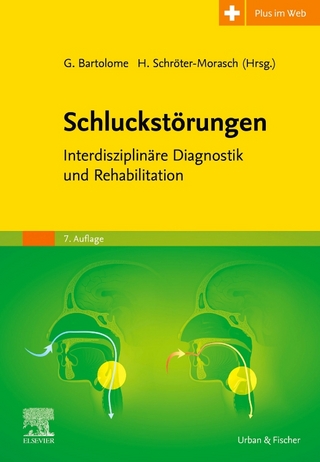
Pure-Tone Audiometry and Masking
Plural Publishing Inc (Verlag)
978-1-59756-340-6 (ISBN)
Many of the most difficult concepts for a beginning audiology student are addressed: references of the decibel in basic acoustics, calibration of equipment, interpretation of the audiogram, and masking procedures.
Maureen Valente, Ph.D. Maureen Valente, Ph.D., earned her Bachelor of Science and Master of Science degrees in Speech and Hearing Science from the University of Illinois in Champaign-Urbana. She spent her Clinical Fellowship Year in the Chicago area, in the office of GE Shambaugh, MD. Subsequent work experiences included private practice and medical settings in the Kansas City and Omaha areas, including employment at Boys Town National Research Hospital in Omaha. After moving to the St. Louis area, Dr. Valente was employed as a full-time faculty member for eighteen years at Saint Louis University. She graduated with her Doctor of Philosophy degree in Speech and Hearing Sciences from Washington University in St. Louis. Shortly thereafter, she was delighted to accept a position as the Director of Audiology Studies within the Program in Audiology and Communication Sciences (PACS) at Washington University School of Medicine. She carries a joint appointment within PACS and as an Assistant Professor within the university's Department of Otolaryngology. Areas of interest include development of AuD education, diagnostic audiology, auditory processing disorders, and vestibular evaluation in the pediatric patient.
Foreword by Series Editors James W. Hall, III, Ph.D. and Virginia Ramachandran, Au.D. Preface Acknowledgments About the Author Introduction Rationale for Pure-Tone Audiometry Purposes Scope of Practice Issues References 2. Acoustics Overview Simple Harmonic Motion Frequency Intensity db IL (Intensity Level) db SPL (Sound Pressure Level) dB HL (Hearing Level or Hearing Threshold Level) dB SL (Sensation Level) Phase Complex Waveforms References 3. Preparation for Pure-Tone Testing The Hearing Clinic Equipment Audiometer Types Audiometer Controls Transducers Calibration and the ANSI Standards The Daily Listening Check Patient Preparation Infection Control References 4. Threshold: Methods of Ascertaining and Recording Psychophysical Methods Method of Adjustment Method of Constant Stimuli Method of Limits Modified Hughson-Westlake Procedure The Audiogram Forms Audiometric Symbols Manual Pure-Tone Threshold Audiometric Procedures Air Conduction Testing The Pure-Tone Average Bone Conduction Testing Obtaining a Valid Audiogram Clinician Variables Patient Variables Stimulus Variables Environment Variables References 5. Audiogram Interpretation Important Parameters Magnitude Type Configuration Symmetry Imparting Pure-Tone Findings References 6. Masking Masking in the Hearing Sciences Clinical Masking Masking Theory Rules of When Masking Should Be Implemented Air Conduction (AC) Testing Bone Conduction (BC) Testing Types of Noise Used Clinically Plateau Masking Procedure Recording of Results Sensorineural Acuity Level (SAL) Test Challenging Masking Cases References 7. Unconventional Pure-Tone Techniques The Pediatric Patient Electrophysiology Behavioral Observation Audiometry (BOA) Visual Reinforcement Audiometry (VRA) Conditioned Play Audiometry (CPA) Immittance Audiometry Tuning Fork Tests Nonorganic Hearing Loss Ultrahigh-Frequency Audiometry Conclusions References 8. Identification Audiometry: Hearing Screening Screening for Outer and Middle Ear Disorders Screening of Infants From Birth to Six Months Screening of Toddlers: 7 Months Through 2 Years Screening of Preschool-Aged Children Screening of School-Aged Children Screening of Adults Disorder Impairment Disability Conclusions References 9. Sample Audiograms: Frequently Seen Hearing Disorders Conductive Hearing Loss Otitis Media Otosclerosis Ossicular Chain Disarticulation Cholesteatoma Sensorineural Hearing Loss Presbycusis Meniere's Disease Ototoxicity Noise-Induced Hearing Loss Central Disorders Acoustic Neuroma Auditory Neuropathy Auditory Processing Disorders (APD) References 10. Pure-Tone Audiometry: Past, Present, and Future Additional Historical Perspective Bekesy Audiometry Tone Decay Short Increment Sensitivity Index (SISI) Alternate Binaural Loudness Balancing (ABLB) Pearls and Pitfalls: Current Pure-Tone Audiometric Techniques and Masking Preparation for Testing Pure-Tone Testing Session Report Writing Additional Utilizations of Pure-Tone Stimuli Future Trends References Glossary Index
| Erscheint lt. Verlag | 1.3.2009 |
|---|---|
| Zusatzinfo | 4 colour illustrations |
| Verlagsort | San Diego |
| Sprache | englisch |
| Maße | 191 x 127 mm |
| Gewicht | 272 g |
| Themenwelt | Medizin / Pharmazie ► Gesundheitsfachberufe ► Logopädie |
| Medizin / Pharmazie ► Medizinische Fachgebiete ► HNO-Heilkunde | |
| ISBN-10 | 1-59756-340-4 / 1597563404 |
| ISBN-13 | 978-1-59756-340-6 / 9781597563406 |
| Zustand | Neuware |
| Haben Sie eine Frage zum Produkt? |
aus dem Bereich


